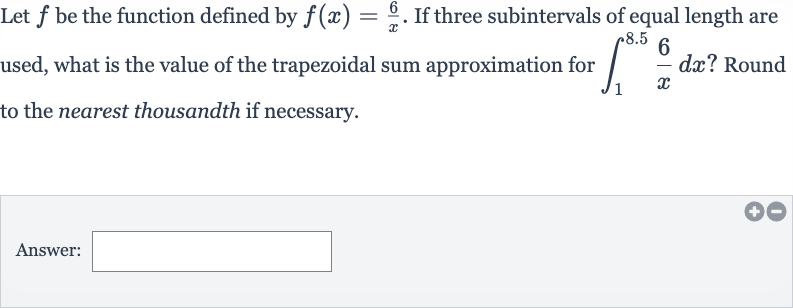Full solution
Q. Let be the function defined by . If three subintervals of equal length are used, what is the value of the trapezoidal sum approximation for ? Round to the nearest thousandth if necessary.Answer:
- Determine subinterval width: To use the trapezoidal rule, we first need to determine the width of each subinterval. The interval from to has a length of . Since we are using three subintervals of equal length, each subinterval will have a width of .
- Calculate x-values: Next, we need to calculate the x-values at the endpoints of each subinterval. The first subinterval starts at and ends at . The second subinterval ends at . The third subinterval ends at . So, the x-values we will use are , , , and .
- Evaluate function: Now we need to evaluate the function at each of these -values. This gives us , , , and .
- Calculate trapezoidal sum: The trapezoidal sum is given by the formula , where and are the endpoints of the interval and through are the points in between. In our case, this becomes .
- Calculate final value: Plugging in the values we found, the trapezoidal sum is .
- Round to nearest thousandth: Rounding to the nearest thousandth, the value of the trapezoidal sum approximation for the integral is approximately .

